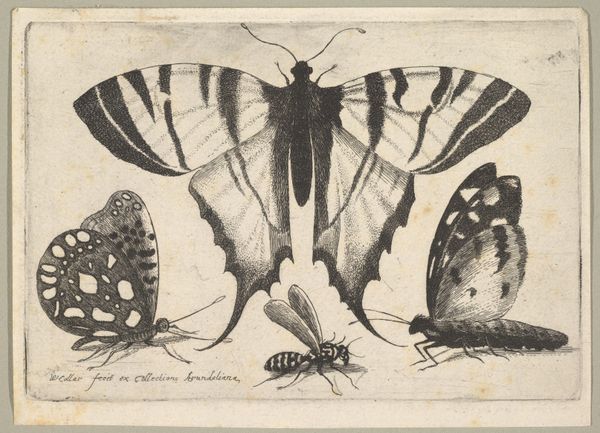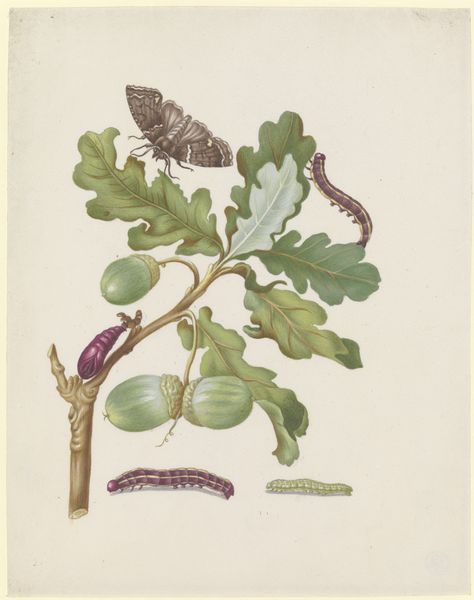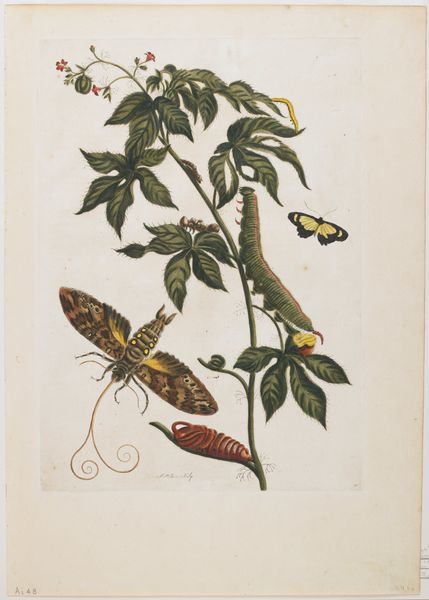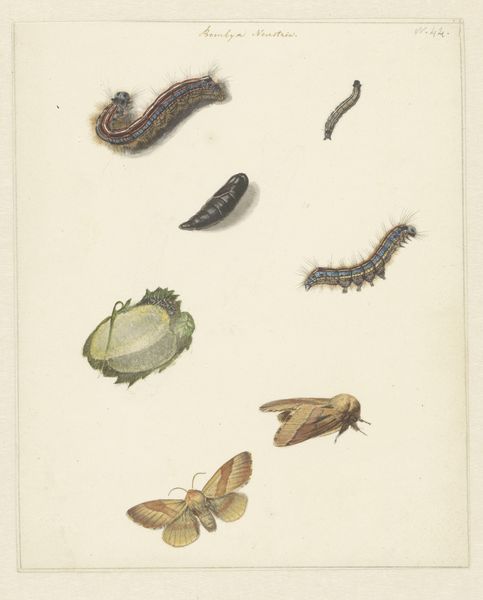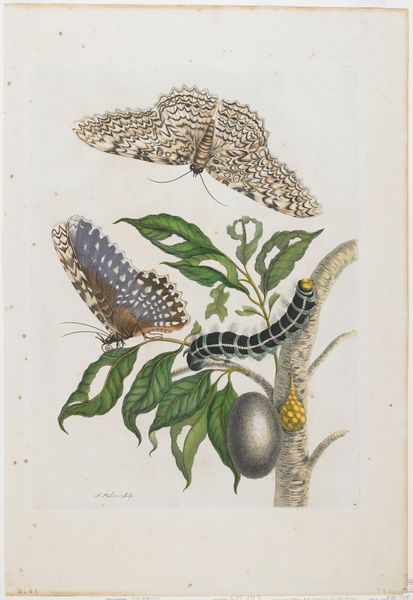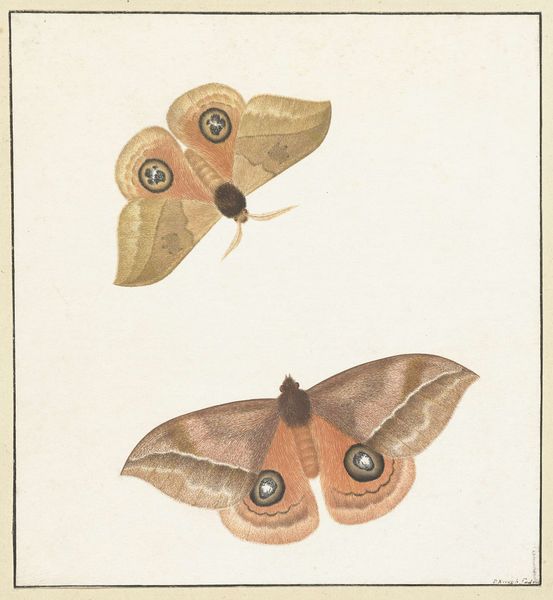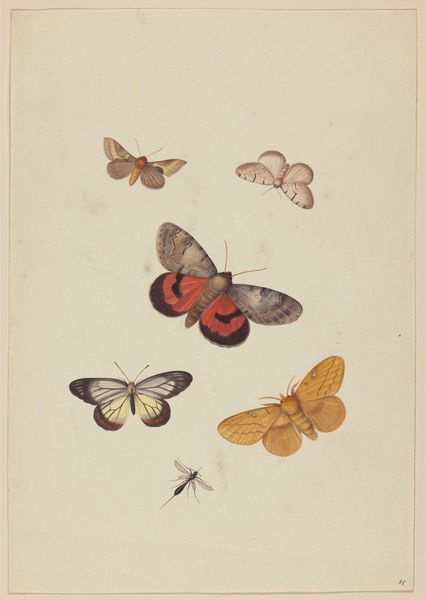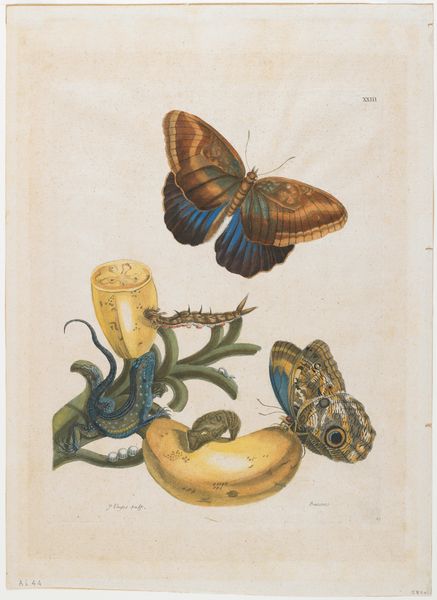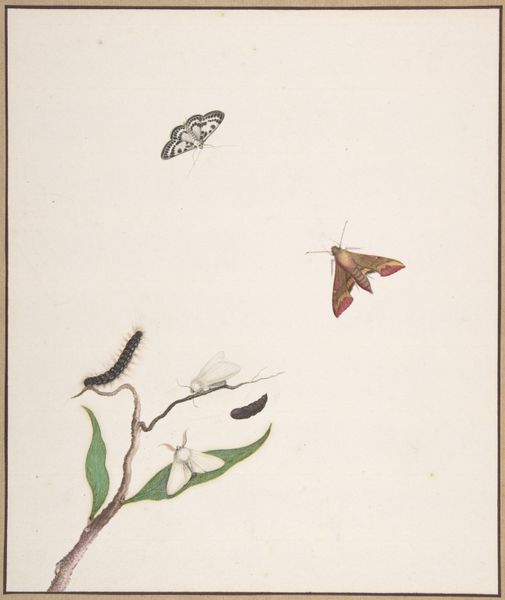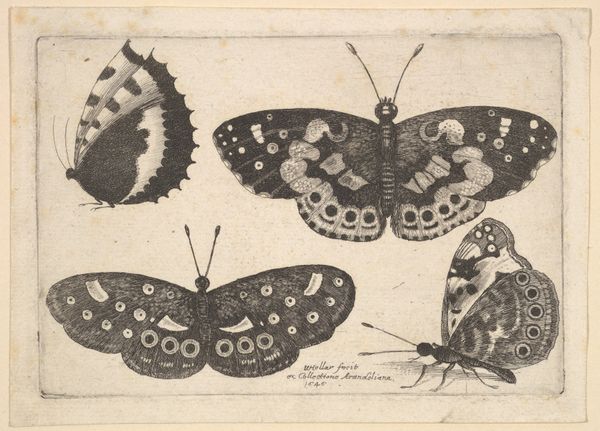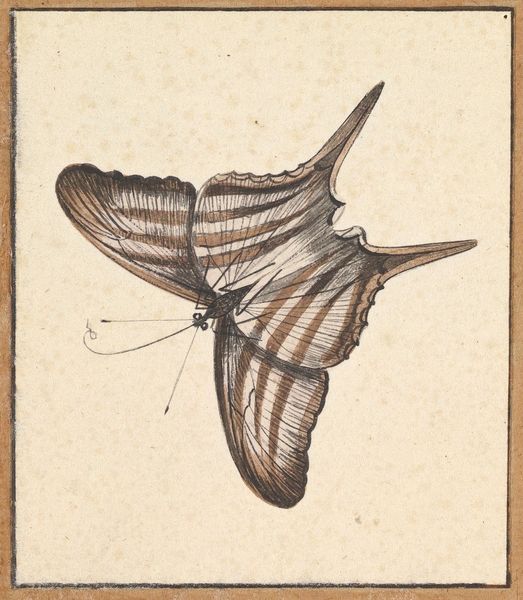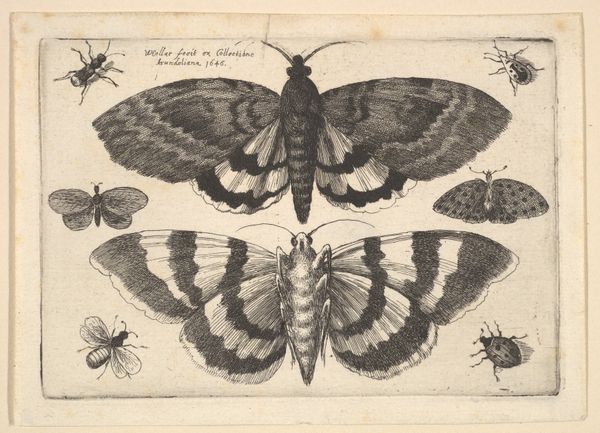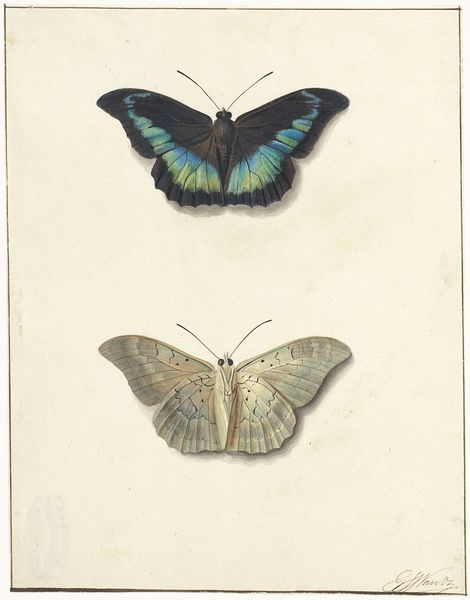
drawing, coloured-pencil
#
drawing
#
coloured-pencil
#
coloured pencil
#
watercolour illustration
#
watercolor
Dimensions: height 230 mm, width 188 mm
Copyright: Rijks Museum: Open Domain
Curator: Here we have “Studies of a Caterpillar, a Butterfly and a Cocoon” created by Alexander Ver Huell, dated sometime between 1832 and 1897. It’s currently held at the Rijksmuseum, executed using colored pencil. What are your initial impressions? Editor: It feels very clinical, like a scientist’s field notes. The muted colors give it a nostalgic quality, but there's also a kind of cold detachment in how the butterfly is presented alongside its other life stages. Curator: Absolutely. The drawing embodies the 19th-century scientific fascination with natural history. Ver Huell was likely attempting to meticulously document each stage of the butterfly’s metamorphosis. There’s an attempt here to bring order and understanding to the natural world through careful observation. Editor: But who gets to observe, and how? This feels linked to the colonial gaze. Consider how detailed studies of the natural world were used to further exploit resources and legitimize European dominance. Were these studies really about appreciating nature or controlling it? Curator: It’s true that these studies were instrumental in advancing scientific knowledge, which sometimes coincided with colonial ambitions. However, at the time, detailed illustrations like these played a crucial role in scientific communication, serving as visual records for researchers who might never see these creatures firsthand. Editor: Still, the way the butterfly is isolated on the page removes it from its ecosystem. It becomes an object of study rather than a part of a complex web of life. I wonder if Ver Huell ever considered the indigenous ecological knowledge of the regions where these butterflies originated. Curator: That’s an important point. Western science often sidelined traditional ecological knowledge, prioritizing its own methods of inquiry. It raises important questions about who controls knowledge production and what perspectives are valued. Editor: Exactly. It pushes me to question the politics embedded within these seemingly objective illustrations and to look for the untold stories behind the images. Curator: Thinking about it that way opens up new interpretations. Thank you for expanding my understanding of this beautiful study. Editor: It also helps us reconsider our own biases when viewing artwork, prompting further inquiry beyond what is presented on the surface.
Comments
No comments
Be the first to comment and join the conversation on the ultimate creative platform.
